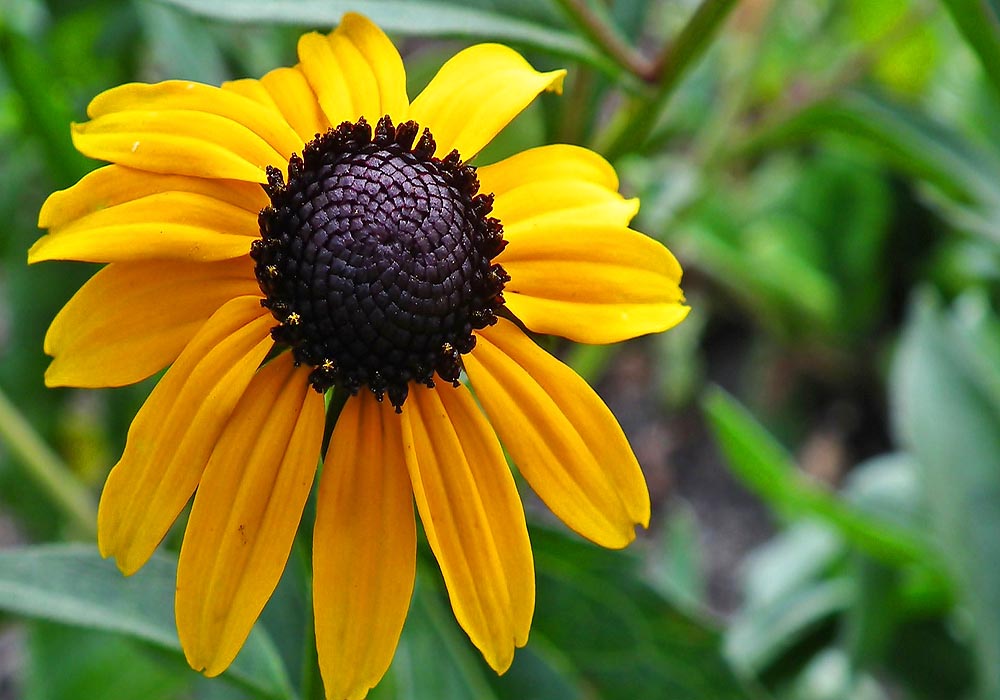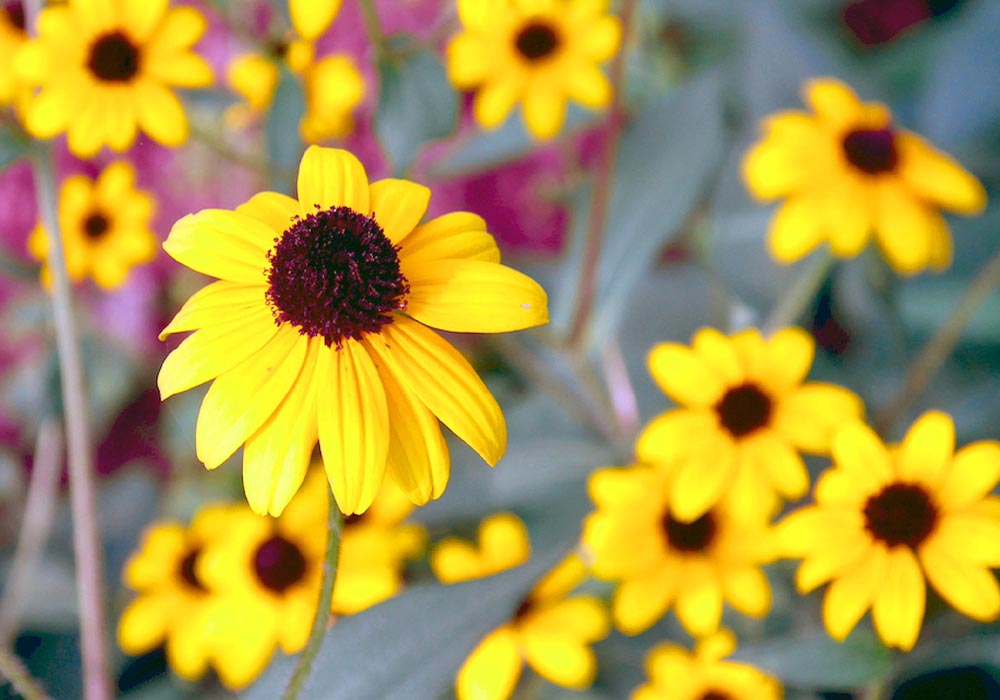Showy Native American short lived perennial for sunny locations. Given a fair amount of room to spread out its airy branches in full sun and this plant will reward with a multitude of bright yellow flowers all summer long. Very easy to grow and maintain. Needs very little work once established. Needs full sun and reasonable water until established then it becomes fairly drought tolerant although flowers wont be so prolific. Ideal for meadow settings or mow it down gardens. Attracts butterflies and bees to nectar and produces lovely flowers for cutting if desired. Also host to some butterfly larva. Great plant for easy gardens and lawn replacements.
The leaves of this species are confusing. While the name suggests that the leaves are tri-lobed they can be but not always. The first year rosette leaves tend to be rounded or spoon shaped, close to the ground where the largest outer leaves can reach 2 or more inches ( 5cm) in diameter and covered with short course hairs that can make them appear slightly reddish..
From the second year onwards plants will flower. They produce a mounded grouping of stems where leaves are deeply cut in three lobes that are broadly rounded irregular in shaped with rounded wavy edges. These leaves are mostly three lobed leaves arranged alternately on their stem and can be up to 7 inches (18cm) long and 4 inches (10cm). They are bright to mid green and covered in stiff short hairs making the leaves feel rough and thick. Hairs cover the top surface of the leaves but are confined to the primary leaf veins on the lower surface. In mid to late spring the flower stalks appear. These are thick and can be up to 5 feet (1.5m) in height. The leaves on these stems vary, the ones on the lower section are the same as basal leaves, tri-lobed and large but they change as the ascend the stem decreasing in size some may loose one lobe until finally they are all lance shaped sharply pointed with serrated edges
Stems are much branched at each leaf node and spreading out wide giving the plant an open airy appearance. Stems and branches are usually mid green often with reddish shading and are also covered with stiff upright hairs.
Flowers are borne at the end of stems but these are so branched that large amounts of flowers are produces. These are up to 1.5 inches (4cm) across with a central disc that is about 0.5 inches (1.3cm) wide stiff, slightly domed and consists of numerous florets that have individual dark purple tubes with yellow green bases and 5 triangular lobes at the tip. The single branched style and five surrounding stamens protrude from each tiny tube. Surrounding the central disk are up to 12 bright yellow florets (what most called petals) that are mostly oval in shape with some notches at the top end and up to 0.7 inches (17mm) long. Flowers are fairly long lived and produced in multitudes making the plants very showy.
Can be direct sown in late autumn or early winter for spring germination but we don't usually recommend this method as most seeds can be eaten by wildlife.
Best started indoors in mid to late winter. Sow in small pots or individual cell trays. Only lightly cover seed. Best germinating temperatures around 60-65 F (15.5-18.3C). keep moist. For information on growing seeds see our General Growing Instructions.
Light. Need full sun especially in zones above 7b. Warmer than this and it can take some light shade. Too much shade and it will weaken and become spindly and fall over. Ensure full sun above zone 7b.
Soil. Not really fussy about soil type as long as it is well drained. Does not tolerate wet soil but does best if it has regular moisture. Very rugged even tolerates clay and large stones
Water. While it is fairly drought tolerant once established will give its best displays if given regular water. In areas with adequate rainfall supplemental water may not be needed but otherwise 2-3 times a week. Keep the water at ground level do not water the foliage this may encourage fungal growth or in high sunshine can cause scorching.
Space. Plant widely as can grow and expand to 2-3 feet (61-91cm) wide with an airy look and multitudes of flowers. If crowded may not flower as well and may shorted lifespan.
If location is sheltered from winds it may need staking as stems will not be as strong as in windy locations. This will also be true for areas with sudden violent thunderstorms.
Works well if several are planted together for long lasting bright color. does well in meadow setting as can mow it down at year end or early spring. Does self seed so may need some thinning to avoid it taking over a meadow setting.
It is the host plant to the larva for the Silvery Checkerspot (Chlosyne nycteis) butterfly, and the Wavy-Lined Emerald (Synchlora aerata) butterfly plus several species of moth.
It can also be eaten by deer and other wildlife such as rabbits and groundhogs. It can mostly defend against deer browsing but this will reduce the height of the plant to 1-2 feet (30-61cm) and the flowers will be much smaller. Some areas suffer badly with deer others the deer don't seem to eat it. Rabbits and Groundhogs always do.
Many species like to eat the seeds they are especially loved by goldfinches who often turn the plants bright yellow as if they were still blooming as they feed on the seeds.








